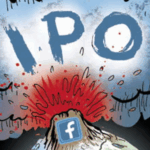 Video and cross-screen private marketplaces (PMPs) are all the rage, though their strategic uses differ from publisher to publisher.
Video and cross-screen private marketplaces (PMPs) are all the rage, though their strategic uses differ from publisher to publisher.
AOL’s newest PMP partner, Rev4 Media, wanted to take advantage of the silver screen and the associated second-screen opportunity for mobile app developers. It’s in the process of building a PMP using AOL’s technology.
Rev4 Media develops an interactive cinema ad platform, which aims to connect advertisers like Coca-Cola to pre-show ad slots on 40,000 movie screens across the United States.
Like programmatic TV, real-time bidding in the cinema environment may never reach “real time” because of hardware and infrastructure challenges, but there are areas where automation can speed things up, said Dave Young, Rev4’s CEO.
Most national pre-show cinema ad buys happen on a direct basis, and the average return time on an ad request is about 72 hours. By digitizing the buying process, Rev4 claims its platform can shave that down to 90 minutes or less.
“We see ourselves as the delivery mechanism to help turn ads around much faster,” Young added. Additionally, by hooking its supply to Adap.tv demand, “we see opportunity to add cinema into the chain for an entire package buy including web and mobile.”
Many theaters re-run ads or cycle through generalized house ads, which means lost revenue opportunities for theatre chains, Young said.
In some instances, the average CPM for an on-screen ad is $35.
“What we can do here is offer up those slots at a lesser CPM by aggregating smaller advertisers like app developers who might want to push out mobile app install ads to a connected audience who, for example, went to see ‘The Hobbit’ and there’s a fantasy game these developers want to promote,” he said.
Although some large theatre ad networks such as National CineMedia sell ads against national programming packages like “FirstLook,” there is still a heavy mix of local and regional placements like real estate and physicians’ ads preceding films.
Rev4 sees more opportunity for smaller advertisers – those who wouldn’t necessarily amass the buying clout at a national level or partake in $50 million commitments – to access its private demand channel.
“I know when a brand goes to make an ad buy, they want to target as many quality publishers as possible to get their message out and AOL has established a lot of those relationships already,” Young said. “The difference with cinema is that we have an average of 20 people looking at each ad at a time. We sort of get to show a companion ad on that second screen.”
Regardless of the reason a given publisher establishes a PMP, AOL has been a big beneficiary. PMPs have sprouted across the board for AOL, said Henk van Niekerk, AOL Platforms’ SVP of publishers and ad networks.
The company has powered more than 60 video PMPs this year, including one PMP it built for Australian broadcaster Multi Channel Network, and facilitated more than 100 private deals on the display side, compared to 10 this time last year.
Private marketplaces can be channel-focused (mobile/connected TV), audience-based or content/context-driven (sports/weather), depending on the seller’s needs, van Niekerk said.
For instance, Vevo’s primary distribution point was desktop video via YouTube, but as mobile channels and connected TVs proliferate, it had enough inventory to justify testing programmatic sales through a PMP built with AOL’s Adap.tv.
Other platforms, such as Comcast’s FreeWheel, enable premium sellers such as A+E Networks to bundle mobile and connected TV inventory on a guaranteed, reserve basis in a PMP beyond their direct sales businesses.













